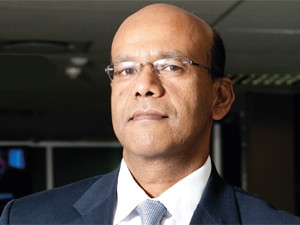
Modern CIOs need to break the shackles of conservatism and convention and undertake technology investment as if it were a portfolio of products and solutions that drive enterprise value. They need to become the venture capitalists of the IT world.
However, CIOs have traditionally been relegated to the back rooms of implementation, expected to deliver and blamed for failure. For them to now become risk-intelligent and manage IT as a portfolio of investments is a significant change, and yet, according to the 2015 Gartner CIO Survey, 69 percent of the 2 810 CIOs surveyed worldwide said that the discipline of risk management is not keeping up with changes and they need to adapt far more quickly to the digital world.
A report by Deloitte, 'Chief Information Officer as Venture Capitalist', defines the concept as one where the CIO becomes an active driver of business growth and innovation, where they develop new mind-sets and capabilities and evaluate performance in terms that business leaders understand. It's not so much a trend as a necessity as this type of thinking will be instrumental in creating an enterprise that is capable of thriving within the digital economy.
Kamal Ramsingh, technology leader at Deloitte, highlights some of the issues that face the CIO in this shift: "When you consider that many South African CIOs have come from a technical background, it presents a challenge when they're expected to converse with the C-Suite in the language of business as opposed to the language of technology. They need to add two elements to their role - a portfolio mind-set that can add in new deployments as well as radical experimentation in areas such as cloud or mobile, and the language that explains these projects in terms that the CSuite can understand."
Mind shift
"Many CIOs have probably moved up to the C-Suite via IT Operations, so thinking like a venture capitalist may be a mind shift for many," says Christine Sheffields, CIO at Innovation Group. "From being riskaverse and concerned about keeping IT operations stable, now they need to find a balance between keeping the lights on and taking calculated risks in new technology and new delivery methods to help propel business objectives ahead of the competition.
Business leaders are interested only in the real, tangible business benefits that their technology choices deliver.
Mark Gebhart, Saratoga
Unfortunately, not everything is going to work and the CEO and board need to accept that along with the wins there may be a few losses."
This way of thinking is an interesting shift for the CIO, one that can have enormous potential. However, CIOs do need to examine their reporting mechanisms and the way in which they're measuring performance against the expectations of the organisation.
"Modern business expects every department to do more with far less budget, all the while boosting its contribution towards the business' bottom line," says Rory Headon-Weeks, CTO at Microsoft South Africa. "CIOs now have to actively manage their technology portfolios in such a way as to deliver enterprise value and innovation, while still providing the services and applications that make the organisation function. The CIO has to continue to run the IT shop while integrating more deeply with the business so that IT can enable and provide innovation to help solve business issues."
In most cases, the CIO has been kept apart from the core leadership of the business and there have been challenges around how the technology unit's contribution is measured. Originally categorised as an infrastructural cost and support service, now it's central to the enterprise's growth strategy and can only be done in partnership with the rest of the C-Suite.
"Business leaders are interested only in the real, tangible business benefits that their technology choices deliver," says Mark Gebhart, CEO of Saratoga. "These need to be understood up-front, documented in clear language that relates to the business' strategic goals and measured regularly. Business is happy to accept increased risk levels in systems delivery if this buys them faster time to market, less expensive implementations and the opportunity to test new business models quickly. The CIO needs to take this on board and make these approaches possible for the business."
Foundation
While this change in dynamic may well be a drastic one for many CIOs as they face the boardroom instead of the server room, its success hinges on their innate understanding of technology. The traditional route from IT guy to CIO may demand a high learning curve when it comes to talking the language of the enterprise, but it forms the essential foundation of their ability to successfully create, manage and invest in a varied IT portfolio of projects.
"The historical use of technology in business has been to drive efficiencies, to drive productivity and it was the enabler of growth," says Robert Boccia, CIO of Lion of Africa. "We need to retain this aspect of technology, but add a new perspective where technology becomes the driver of innovation and growth."
This article was first published in Brainstorm magazine. Click here to read the complete article at the Brainstorm website.
Share